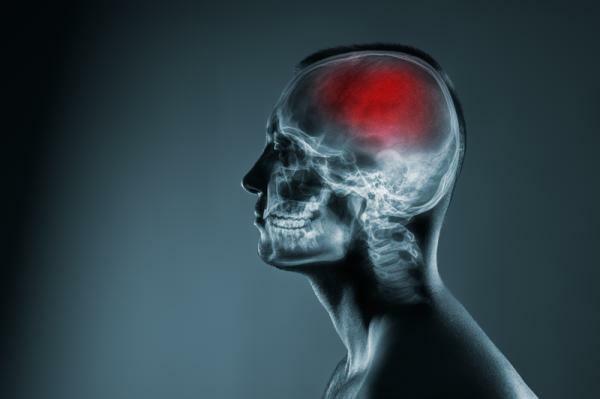
We live surrounded by stimuli that condition our way of being, thinking and acting in each area that we travel. Likewise, technological innovations have caused us to try to direct our attention to many things at the same time, given the wide variability of stimuli that exists. In turn, this explains why our mind suddenly moves from one object, place, situation or person to another instead of focusing on something in particular.
However, there are people who have more difficulties than others to focus their attention, which that can cause unfavorable consequences that harm the proper development of life everyday. In this Psychology-Online article, we will provide you with information about the hypoprosexia: what it is, causes, symptoms and treatment.
Index
- What is hypoprosexia
- Causes of hypoprosexia
- Symptoms of hypoprosexia
- Treatment of hypoprosexia
What is hypoprosexia.
We can understand hypoprosexia as a dispersion of attention
In other words, hypoprosexia is an attention disorder that prevents you from focusing your attention on a certain situation. Consequently, the person with hypoprosexia permanently oscillates between different stimuli without being able to stop at any of them. Taking into account its characteristics, we could include hypoprosexia within the attention deficit disorders delimited by the DSM-V[1] based on the established criteria to arrive at an adequate diagnosis.
Criteria for detecting hypoprosexia
As we have mentioned before, to diagnose hypoprosexia it is necessary to take into account a set of criteria:
- Difficulties in school and/or work performance.
- Obstacles in sustaining attention in recreational activities.
- Complexity in understanding rules.
- failure in the organization of time and/or space.
- Repeated distraction in the face of external stimuli.
- Persistent forgetfulness.
- Duration of six months or more.
- Emergence of patterns from 12 years of age.
- Deterioration of work, social and family relationships.
- The alterations cannot be explained from the presence of some other mental disorder and/or the intake of medications.
Causes of hypoprosexia.
What causes hyperprosexia? To better understand hypoprosexia and know how to treat it, we must know the possible origins of the condition. Understanding this information is crucial to establish alternatives that allow improving the symptoms of this disorder. Next we will develop the most frequent causes of hypoprosexia:
Genetic factors
The information stored in the genes of each human being determines their way of being and acting in certain situations. In this way, it is possible that people with this clinical picture present alterations in the connections neurons that develop in the areas of the cerebral cortex, which process information from stimuli external.
This condition allows us to understand that people are born with a certain predisposition to develop this pathology due to the Genetic heritage transmitted by their parents. For this reason, if one of them has been diagnosed with this disorder, there is a good chance that the person also has it.
Environmental factors
It's about the experiences that have marked the way of acting and deal with social situations. The traumatic experiences that the person with hypoprosexia has experienced in the past are of great importance in this regard because they can have serious repercussions in the present. For example, if at some point there have been situations of physical and/or verbal violence, it is possible that the person fluctuates in their attention as a mechanism to avoid reality.
Symptoms of hypoprosexia.
To detect hypoprosexia, it is necessary to know the manifestations that arise at the level of actions, thoughts and emotions. For this reason, we will now present the main symptoms of this condition:
- diversion of the attention.
- Difficulty holding a conversation.
- Inability to remember certain events or events from the past.
- Failure in the temporary organization.
- Forgotten.
- Anxiety.
- Frustration.
- Distress.
- Depression.
- Variable mood.
- sweating
- Negative thoughts about the same person and about others.
However, it should be noted that the presence of any of these symptoms in isolation does not necessarily represent a picture of hypoprosexia. It is essential that the diagnosis be done by a professional of mental health that evaluates the aspects and experiences of each person in particular.
Treatment of hypoprosexia.
How is hypoprosexia treated? Today there are some treatments that improve the quality of life of people suffering from hypoprosexia. In the following paragraphs, we explain the most effective treatments:
psychological therapy
Psychological therapy is a method that deals with work emotions, thoughts and behaviors causing the patient's symptoms. The therapy provides tools to deal with situations of stress and/or anxiety in a more efficient way from the implementation of the themes located in the therapy.
When the reasons that cause hypoprosexia are resolved and the person manages to focus their attention on more delimited and precise objectives, their living conditions usually improve.
pharmacological medication
We must not overlook that this disorder may have an organic basis. For this reason, the supply of drugs that make changes to neural connections linked to the attentional focus can provide a greater ability to understand external stimuli.
However, the use of pharmacological medication should only be carried out under the indication of a health professional specialized in the subject.
This article is merely informative, in Psychology-Online we do not have the power to make a diagnosis or recommend a treatment. We invite you to go to a psychologist to treat your particular case.
If you want to read more articles similar to Hypoprosexia: what is it, causes, symptoms and treatment, we recommend that you enter our category of Clinical psychology.
References
- American Psychiatric Association. (2013). Diagnostic and Statistical Manual of Mental Disorders (5th ed.). Arlington: Pan American Medical Publisher.
Bibliography
- Mantilla, S. (2006). Neurological diseases and attention problems. Colombian Neurological Act Journal, 22 (17), 190-194.
- Meneses, S. (2004). Attention disorders. Synectic Electronic Magazine, 25 (1), 67-74.
Hypoprosexia: what is it, causes, symptoms and treatment


